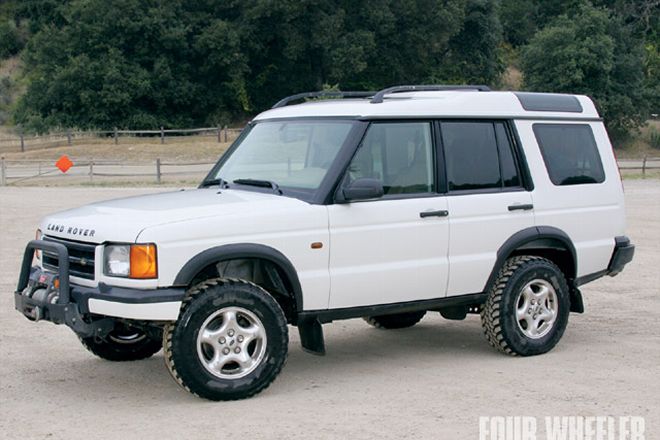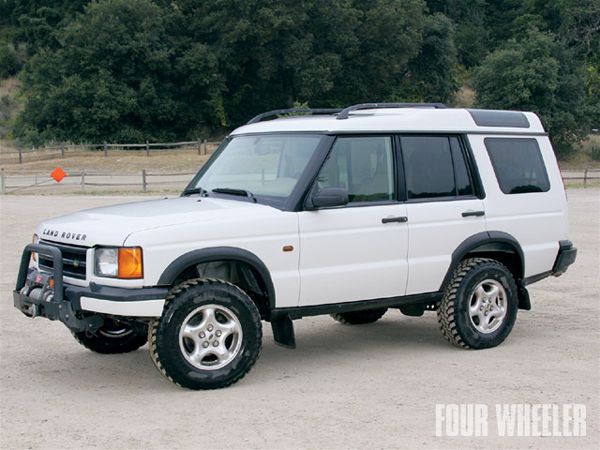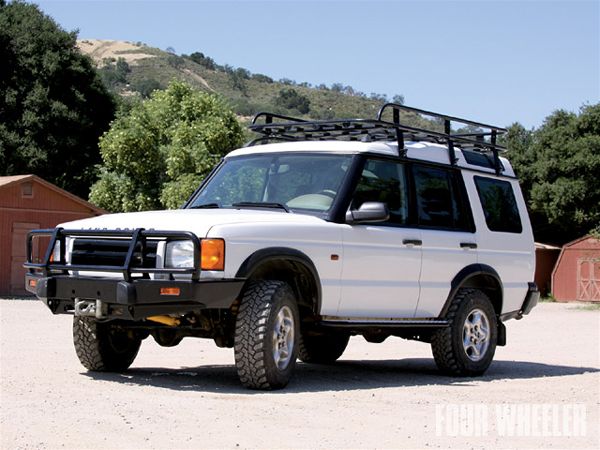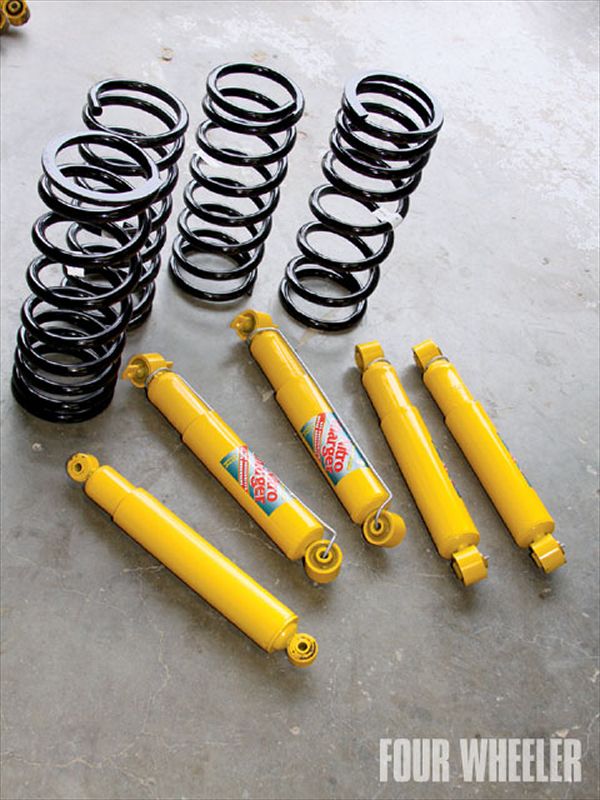
 Before: As you can see, this Land Rover is all business; notice the bottom half of the plastic bumper is missing. (We're told this modification was necessary to provide some much-needed approach angle clearance.)
Before: As you can see, this Land Rover is all business; notice the bottom half of the plastic bumper is missing. (We're told this modification was necessary to provide some much-needed approach angle clearance.)
During a recent visit to California's Hollister Hills State Vehicular Recreational Area, we noticed a 2000 Land Rover Discovery that the park officials use to patrol some of the more remote regions of their 800-acre Upper Ranch facility, the same location where we conduct our annual Top Truck Challenge event. After a brief conversation with one of the rangers about the vehicle's day-to-day use, we were befuddled by the rig's mildly-built nature.
Basically, the vehicle was stock, except for a 9,000-pound Warn winch that was mounted up front. Cruising through Hollister's 24-plus miles of dirt trails each day isn't exactly easy on a vehicle, especially when laden with an arsenal of law enforcement equipment and personal rescue devices. Couple that with terrain challenges such as steep hill climbs, washed out two-tracks and even the occasional stream crossing, and you have a unique scenario where park rangers actually needed improved ground clearance, better approach and departure angles, and solid extraction anchors to do their job more efficiently.
Additionally, the Land Rover's limited interior cargo space presented further challenges to park officials when the occasional unruly guest required personal escort from the premises. After learning about these difficulties, we questioned chief ranger Jeff Gaffney about the idea of modifying the Disco with products we felt could better fortify the Discovery for their particular needs. Gaffney agreed to our offer and even arranged to have his lead maintenance supervisor, Gilbert Mayorquin, perform the installations for us.
 After: Armed for duty, this Discovery is every park ranger's dream ride.
After: Armed for duty, this Discovery is every park ranger's dream ride.
Our first priority was to improve the vehicle's suspension system so that a definitive improvement in ride quality could be achieved. A mild suspension lift would also add valuable ground clearance to the otherwise-capable Discovery chassis, which is always a good thing in our opinion. A front winch bumper from ARB would resolve the whole issue of extraction anchors while increasing approach angle significantly. Up top, we added a roof rack to increase the vehicle's storage capacity, and to ensure that park officials would actually be able to use the roof rack we added a pair of ARB Protection Steps. Check out how these parts were bolted on to make a hard-working Land Rover the best it could be for our favorite park rangers.

1. These are the new Old Man Emu progressive-wound coil springs and Nitrocharger shocks supplied to us by ARB. The system shown here is a 1.5-inch lift designed specifically for the Discovery Series II. We like this system because Old Man Emu engineers designed it to handle the rigors of the Australian outback, where unmaintained dirt two-tracks are the only roads around. To help absorb bumps while negotiating harsh terrain, similar to what you might find in the Australian outback, Old Man Emu incorporated several smart features into their Nitrocharger line of shocks. Innovations such as triple lip seals and extra-thick body tubes ensure that Nitrocharger shocks can survive even the worst of conditions without springing a leak. Another thing we like about the Nitrochargers is their eccentric sliding intake valve arrangement, which greatly improves rebound response time while also reducing operating noise. Thanks to durable urethane bushings at each end, these shocks are super easy to install in the factory mounting locations.

Our Take
As with most installations, you don't know the final conclusion until you have spent some time with the vehicle in its modified state. The verdict is still out on this particular round of upgrades because the park rangers simply haven't had enough time to evaluate them in every possible scenario. However, they did tell us that they appreciate the supple ride afforded by the new Old Man Emu suspension system. We also know that the new ARB winch bumper suits their needs just fine in terms of extraction points and approach angle. However, we fear that the mounting location of the winch may make operation a bit more difficult than the previous arrangement, simply because the remote control plug is only accessible from under the front of vehicle--not exactly a convenient place when buried in deep mud. Otherwise, we look forward to updating you about these upgrades and how they hold up to the abuse of the Hollister Hills rangers in the coming months when we start modifying the park's new Land Rover LR3--stay tuned.













